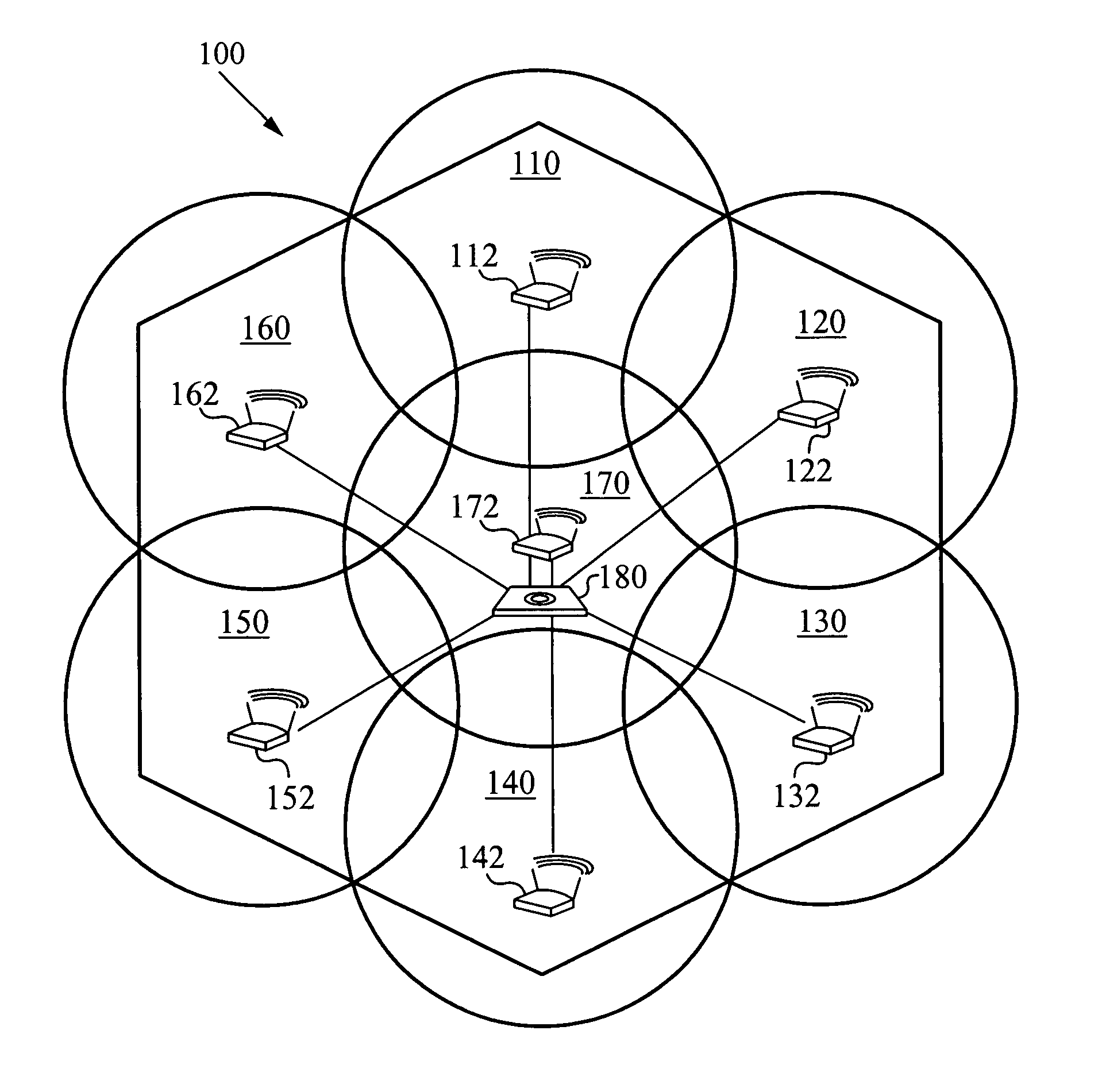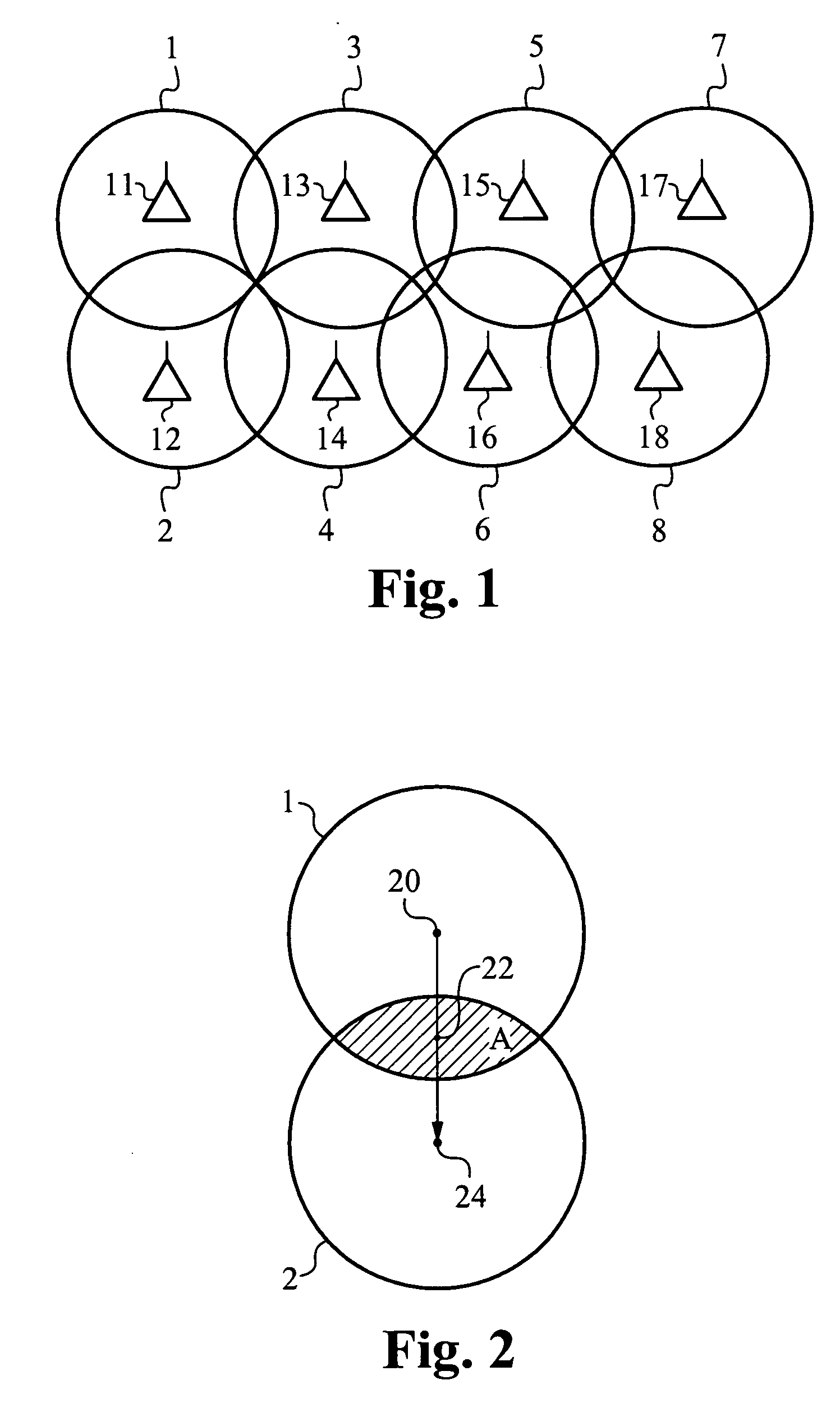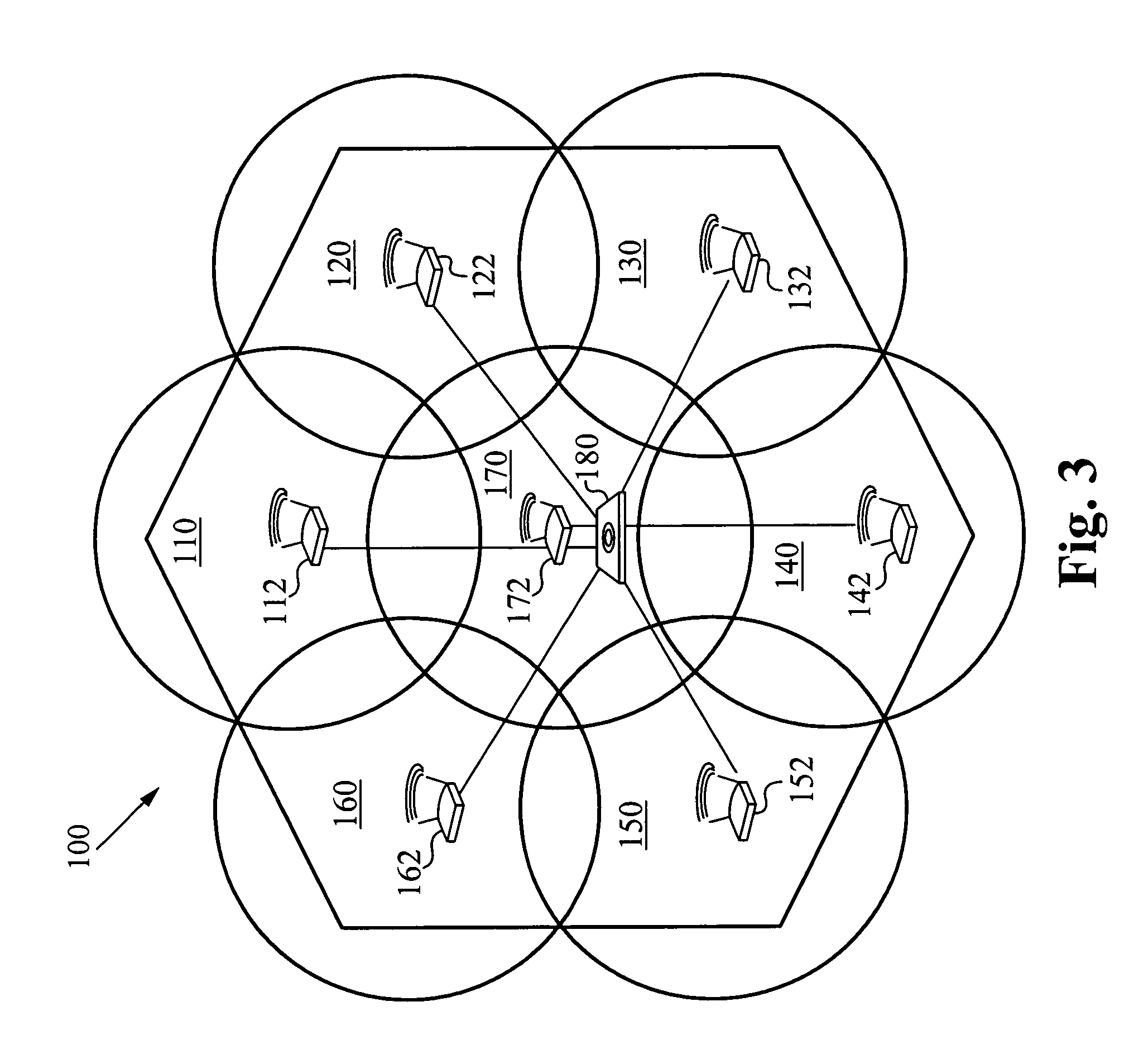User movement prediction algorithm in wireless network environment
a wireless network and user technology, applied in the field of wireless networks, can solve the problems of difficult prediction of movement, difficult management of predicative algorithms, and consumption of system overhead, and achieve the effect of better utilization of system resources
- Summary
- Abstract
- Description
- Claims
- Application Information
AI Technical Summary
Benefits of technology
Problems solved by technology
Method used
Image
Examples
Embodiment Construction
[0019]FIG. 3 illustrates a supercell 100 according to an embodiment of the present invention. The supercell 100 preferably comprises 7 individual cells 110, 120, 130, 140, 150, 160, and 170, and each cell 110, 120, 130, 140, 150, 160, and 170 includes an antenna 112, 122, 132, 142, 152, 162, and 172, respectively. Each supercell is preferably configured such that a single cell, referred to as a center cell, is centrally positioned within the supercell. A group of cells, referred to as boundary cells, radially surrounds the center cell to form an outer boundary of the supercell. As shown in FIG. 3, cell 170 is the center cell, and cells 110, 120, 130, 140, 150, and 160 are boundary cells which surround the center cell 170. Each supercell is preferably controlled by a control device. The control device controls communications within the supercell and also utilizes a predictive algorithm for determining into which adjacent supercells the wireless device might possibly move. The antenna...
PUM
 Login to View More
Login to View More Abstract
Description
Claims
Application Information
 Login to View More
Login to View More - R&D
- Intellectual Property
- Life Sciences
- Materials
- Tech Scout
- Unparalleled Data Quality
- Higher Quality Content
- 60% Fewer Hallucinations
Browse by: Latest US Patents, China's latest patents, Technical Efficacy Thesaurus, Application Domain, Technology Topic, Popular Technical Reports.
© 2025 PatSnap. All rights reserved.Legal|Privacy policy|Modern Slavery Act Transparency Statement|Sitemap|About US| Contact US: help@patsnap.com



